Does your video have dialogue that sounds too quiet while the background music feels too loud? One quick fix is to normalize audio in Premiere Pro. It sets audio to a steady baseline and keeps your project balanced.
With the Premiere Pro normalize audio feature, you can control sudden jumps in volume and prevent clips from feeling mismatched. This makes it easier to mix dialogue, music, and sound effects within the same timeline.
In this guide, you'll learn what counts as normal audio, when to adjust it, and how to normalise audio in Premiere Pro. You'll also see an AI-powered option for faster editing. Let's get started!
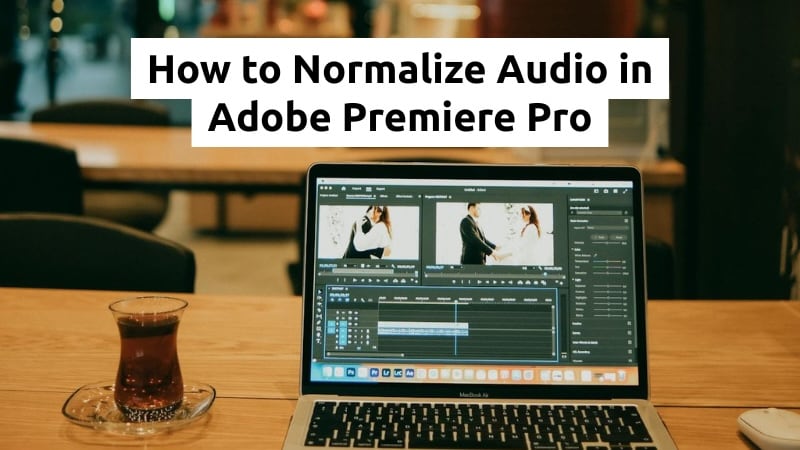
Part 1. What Counts as Normal Audio and When You Should Normalize
Normal audio means sound that stays at a steady level. We need to balance the audio so the audience won't have to adjust the volume. When you normalize audio in Premiere Pro, you adjust clips to a clear baseline that helps keep dialogue, music, and effects balanced.

LUFS Loudness Targets for Different Platforms
Editors often watch levels in decibels (dB) inside Premiere Pro. But streaming platforms use LUFS (Loudness Units Full Scale) to measure perceived loudness over time. Here are the common targets:
- YouTube: - 14 LUFS
- Spotify / Apple Podcasts: - 16 LUFS
- Broadcast & Television: - 23 LUFS
Normalization vs Compression vs Limiting
People often mix up these three terms, but they serve different purposes in audio editing.
| Technique | What It Does | When to Use It |
| Normalization | Adjusts the overall gain so peaks or loudness reach a target level. | Balancing clips with uneven overall volume. |
| Compression | Reduces the gap between quiet and loud parts by controlling dynamic range. | Making dialogue clearer or smoothing music tracks. |
| Limiting | Blocks peaks from crossing a set ceiling to prevent distortion. | Keeping audio safe from clipping during export or broadcast. |
- Normalize Audio: Quickly adjusts overall volume without changing the recording.
- Compression: Controls dynamic range.
- Limiting: Prevents peaks and distortion.
Common Cases for Audio Normalization
You'll often normalise audio in Premiere Pro projects in cases like:
- Combining clips recorded at different levels in one project.
- Raising a voiceover that sounds too quiet compared to other tracks.
- Balancing dialogue, music, and effects from multiple sources.
Part 2. How to Normalize Audio in Premiere Pro - 3 Methods
Audio in a project often comes from different sources, which makes some clips sound too quiet and others too loud. Knowing how to normalize audio in Premiere Pro helps you keep levels steady. Here are the three methods to do it.
Method 1. Normalize Clips with Audio Gain
This option works if you want to normalize audio in Premiere Pro on one clip or several at once.
Step 1. Click on the audio track in the timeline. To select multiple clips, hold Shift and click each clip, or drag a box around them.
Step 2. Right-click the selection and choose Audio Gain.
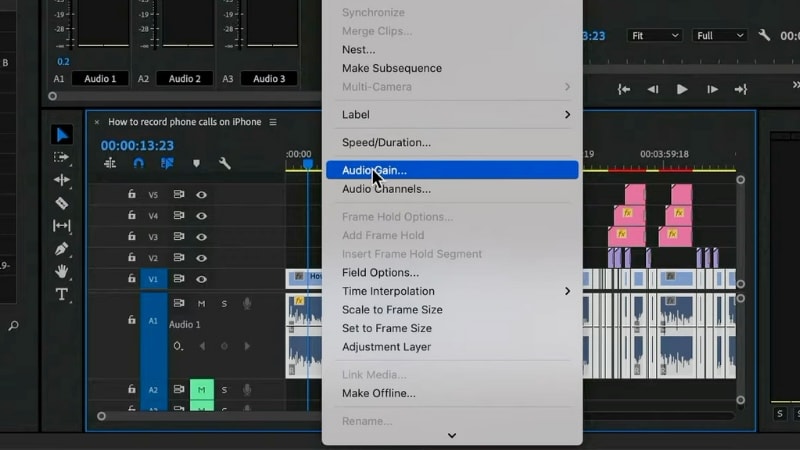
Step 3. On the Audio Gain window, pick Normalize Max Peak and set the target (for example, -1 dB). Click OK to apply, and the selected clips adjust to that level.
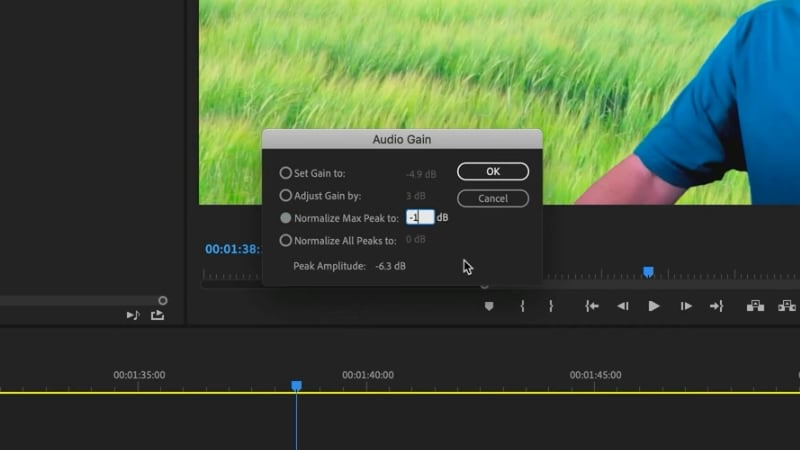
Method 2. Normalize an Entire Track
Use this method to normalize the entire audio track at once.
Step 1. In the top menu, go to the Sequence > Normalize Mix Track to open the settings window.
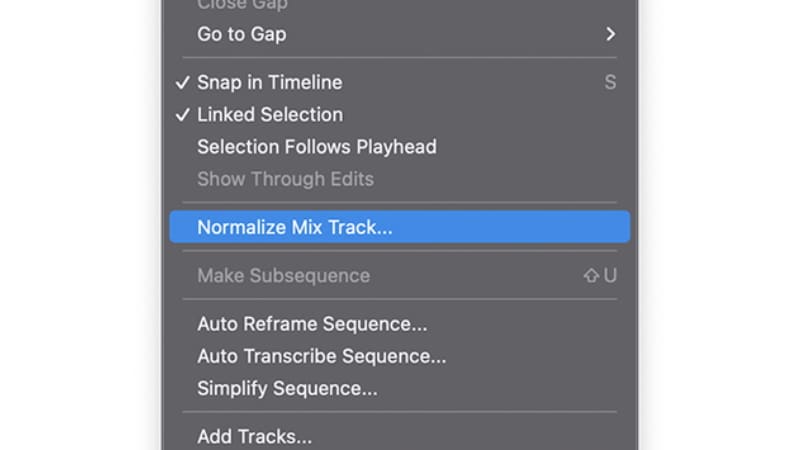
Step 2. Enter your target dB level in the box (for example, -1 dB) and click OK. Premiere Pro will adjust the whole mix to that value.
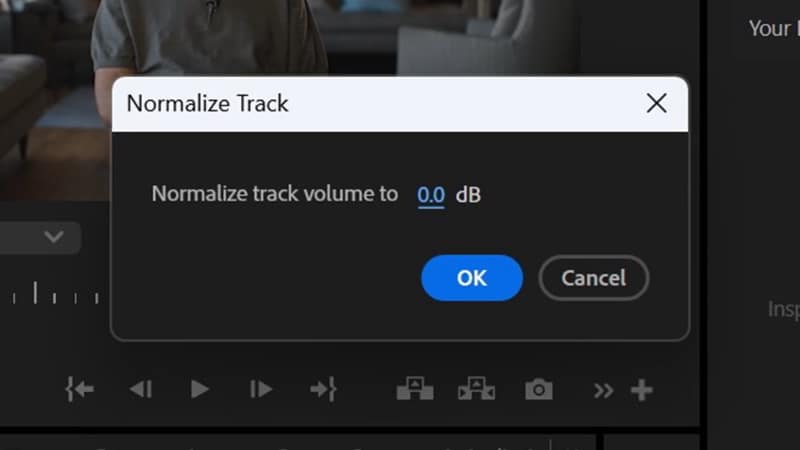
Method 3. Using Essential Sound Panel
You can also use the Essential Sound panel to balance dialogue clips that play at different levels. Follow this step-by-step guide on how to balance audio in Premiere Pro:
Step 1. Select the dialogue clips in your timeline. You can select more than one clip at the same time.
Step 2. Open the Essential Sound panel. If it isn't visible, go to Window > Essential Sound.
Step 3. In the panel, assign the selected clips as Dialogue. Expand the Loudness section and enable the Auto-Match option.
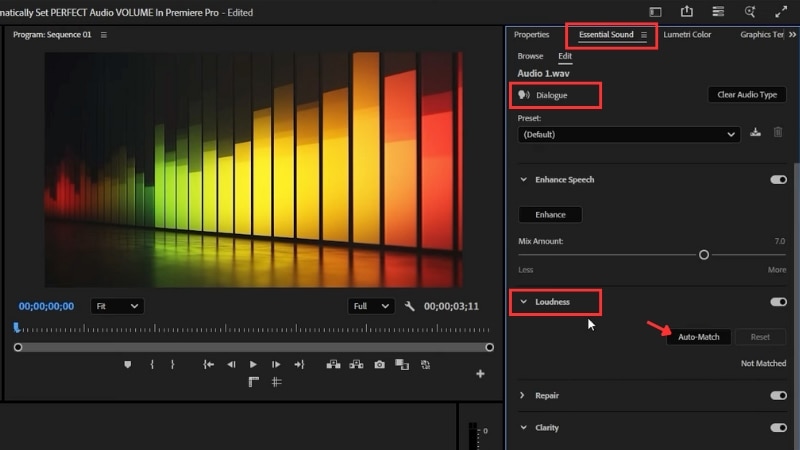
Premiere analyzes the clips and sets them to the same loudness (around -23 LUFS by default). Your dialogue tracks now play at a consistent level, making the mix much easier to listen to.
Pros and Cons Normalize Audio in Premiere Pro
Using Premiere to normalize audio can improve uneven tracks, but it also has limits depending on the project. Here are the key pros and cons.
- Works on single clips, multiple clips, or entire tracks.
- Built directly into Premiere Pro, no need for plugins.
- Saves time when mixing projects with dialogue, music, and effects.
- Peak normalization doesn't guarantee balanced loudness (LUFS).
- Dialogue may still need compression for natural sound.
- Auto-Match can require extra adjustments.
Bonus: Smarter Audio Editing with an AI-Powered Editor
You can normalize audio in Premiere Pro with three different methods. However, the process still requires an understanding of gain, peak levels, and loudness standards. If you prefer a more automated approach, Wondershare Filmora offers an all-in-one audio toolkit powered by AI.
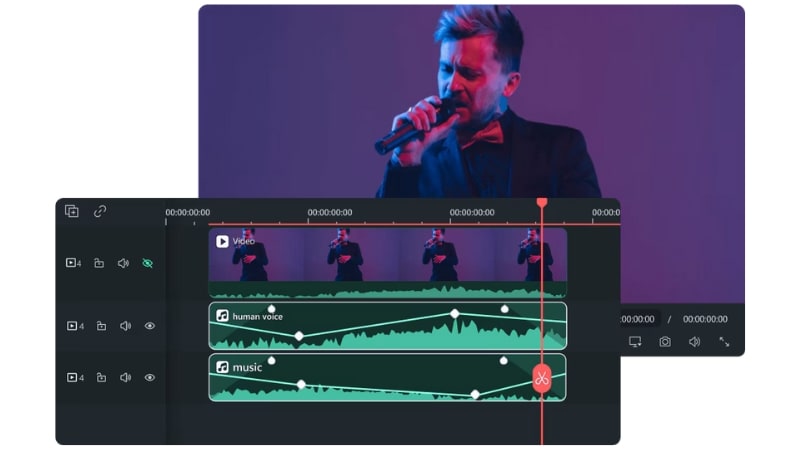
Audio Features in Filmora
- Audio Normalization: Auto-balances audio levels so quiet and loud clips play at a steady baseline.
- AI Audio Denoise: Removes background hum, hiss, or ambient noise that distracts from the main sound.
- AI Voice Enhancement: Boosts vocal presence to make voices clearer and more natural in recordings.
- Auto Ducking: Detects speech and lowers background music when someone talks. This keeps dialogue easy to hear without manual keyframes.
- EQ Presets: Offers ready-made equalizer settings for music, dialogue, or effects. You can apply them instantly without deep knowledge of EQ settings.
How to Normalize Audio in Filmora
Follow the instructions below to normalize audio in Filmora:
Step 1. Import your video or audio files into Filmora and place them on the timeline.
Step 2. Right-click the clip you want to adjust and select Adjust Audio from the menu. If you want to adjust multiple clips together, hold Shift to select them all before right-clicking.
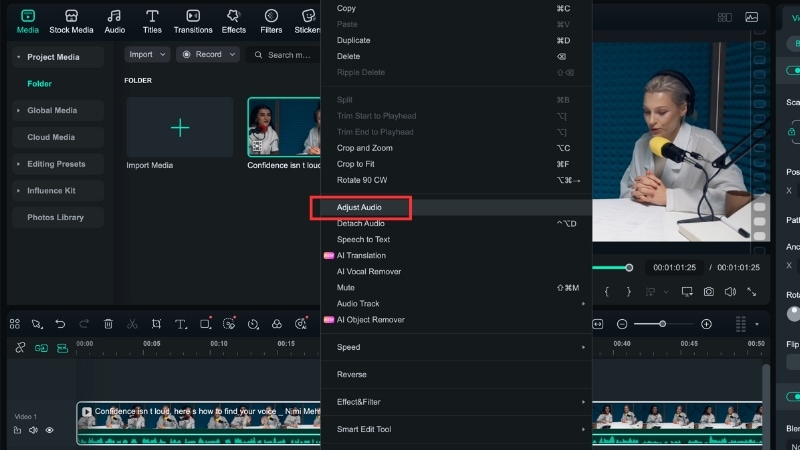
Step 3. Go to the Audio panel > Basic > Adjustment, and enable Auto Normalize to balance the volume of the clips.
Step 4. Play back the project to check the results, then export with steady and clear audio levels.
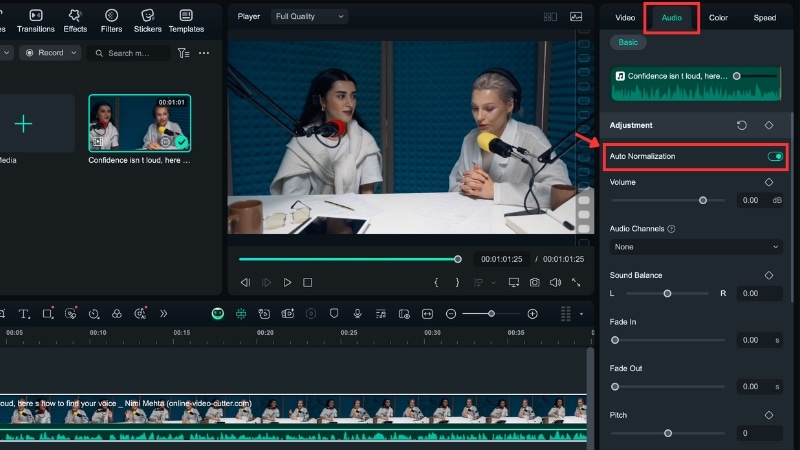
Comparing Audio Editing in Premiere Pro vs. Filmora
Both Premiere Pro and Filmora include ways to manage audio, but the tools differ in how much setup they require.
| Feature | Premiere Pro | Filmora |
| Audio Normalization | Manual setup using Gain, Mix Track, or Essential Sound. | One-click volume leveling with no settings. |
| AI Audio Denoise | Built-in DeNoise effect, but requires manual adjustment of reduction strength. | Removes noise automatically with AI detection and option to remove hum, hiss, and chatter. |
| Voice Enhancement | The Essential Sound panel offers clarity, EQ, and dynamics sliders for better dialogue. | AI Voice Enhancement boosts vocal presence in one click. |
| Auto Ducking | Controlled through the Essential Sound panel with adjustable settings. | Auto lowers background music under dialogue instantly. |
| EQ Presets | Manual EQ adjustment with sliders and curves. | Ready-made EQ presets for quick application. |
- Premiere Pro: Offers greater manual control and customization, giving editors the flexibility to fine-tune every detail for professional-grade results.
- Filmora: Delivers quicker outcomes through AI-powered automation, simplifying the editing process while maintaining high-quality, visually engaging results.
Watch this video tutorial to see Filmora's AI audio tools in action:
Conclusion
Learning how to normalize audio in Premiere helps you control uneven sound levels and keep your projects balanced. With the right method, you can reduce sudden volume shifts and create a smoother listening experience.
The Premiere Pro normalize audio tools are useful for quick control, though they may still need fine-tuning. Each method depends on understanding gain, peak levels, and loudness standards for the best results.
For a faster option, you can use Filmora to normalise audio. It also includes AI features like noise reduction, voice enhancement, and auto ducking to speed up your workflow.
FAQs
-
Should I normalize audio before or after adding effects?
It’s better to normalize after editing your clips but before final mixing. This way, any effects or EQ adjustments won’t affect the overall gain settings. -
Does normalizing audio in Premiere reduce background noise?
No. Normalizing only adjusts the volume level of a clip. To reduce background noise, you’ll need to use Premiere’s DeNoise effect or other noise reduction tools. -
Do I need plugins to normalize audio in Premiere Pro?
No. The Premiere Pro normalize audio feature is built in and works through Audio Gain, Mix Track, or the Essential Sound panel. Plugins are optional if you want more advanced processing.


